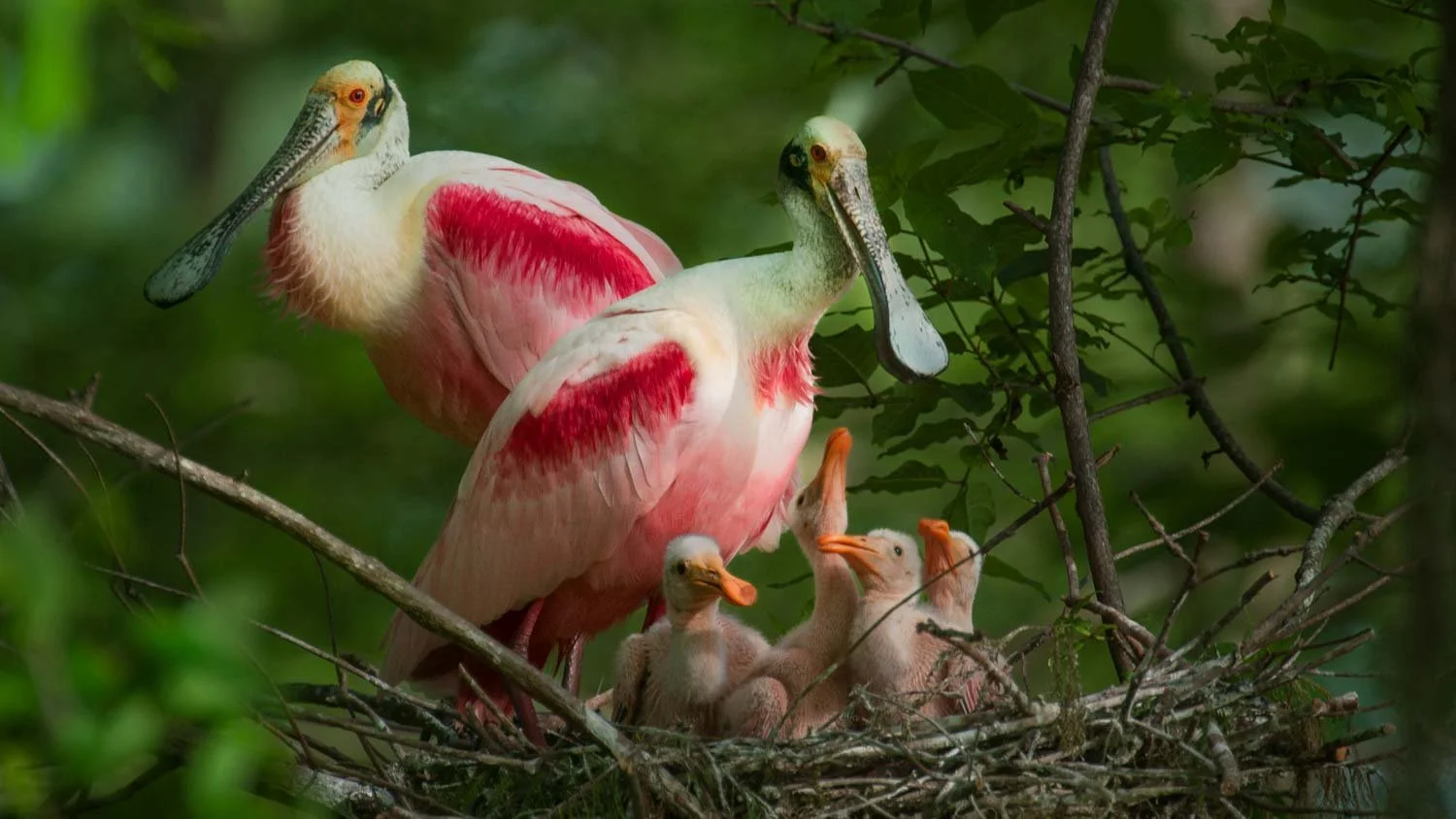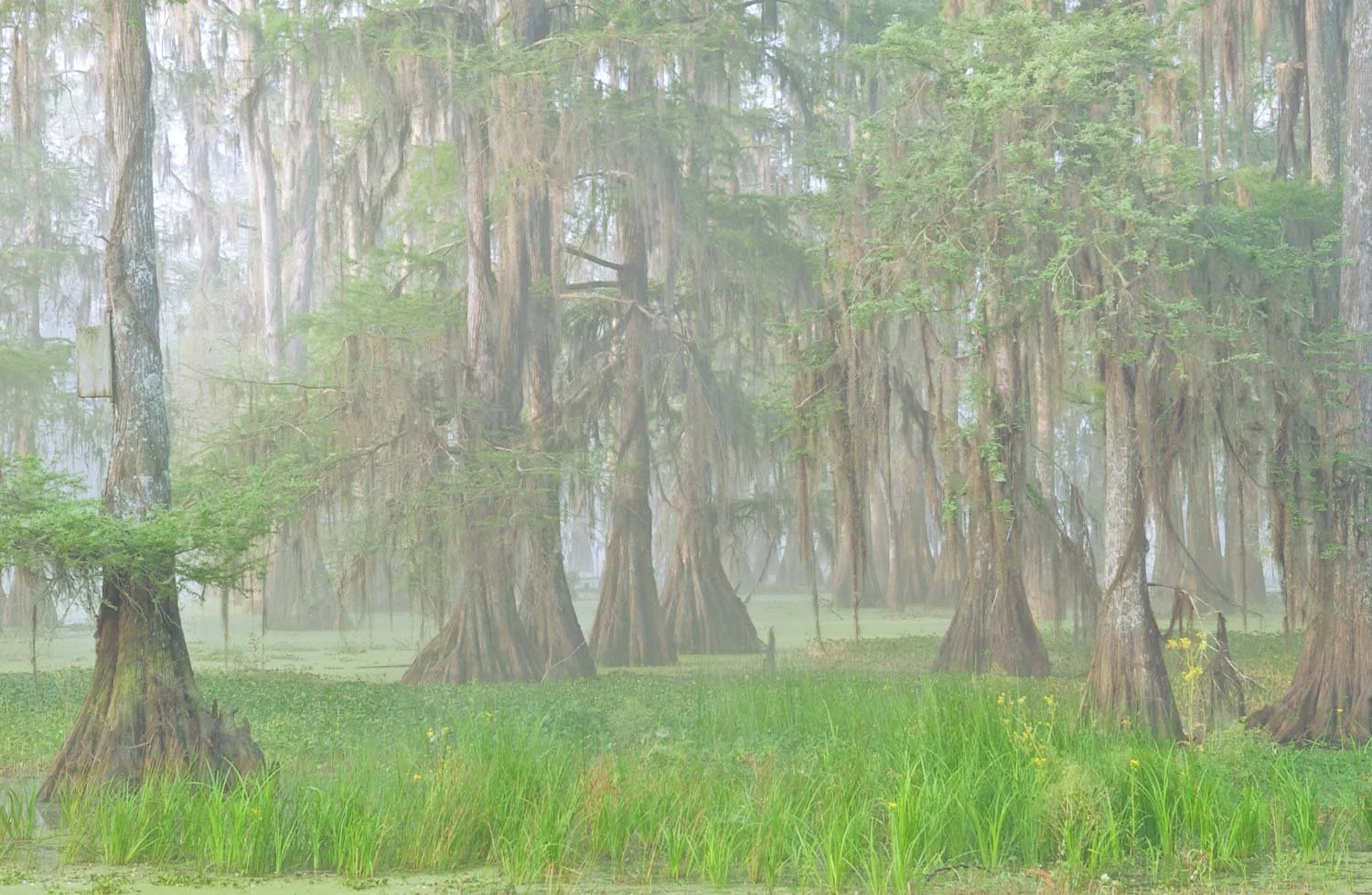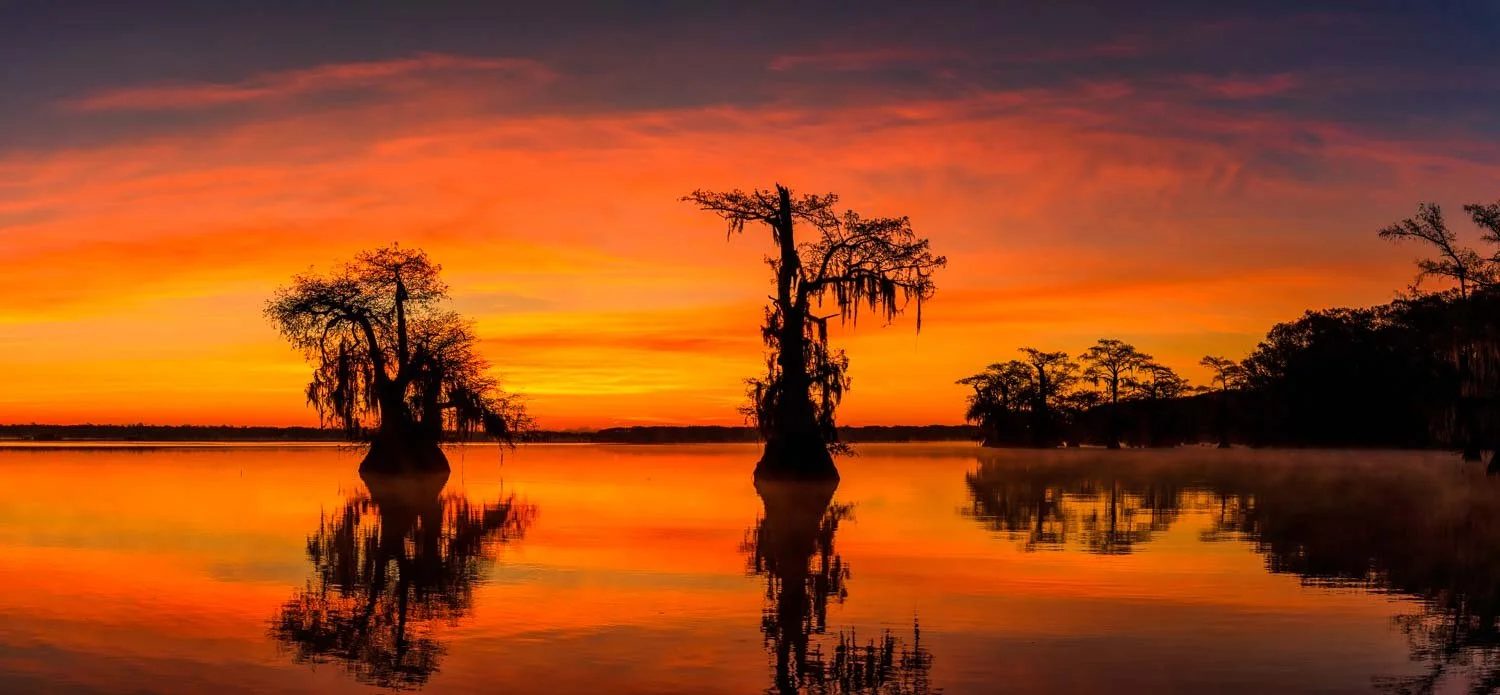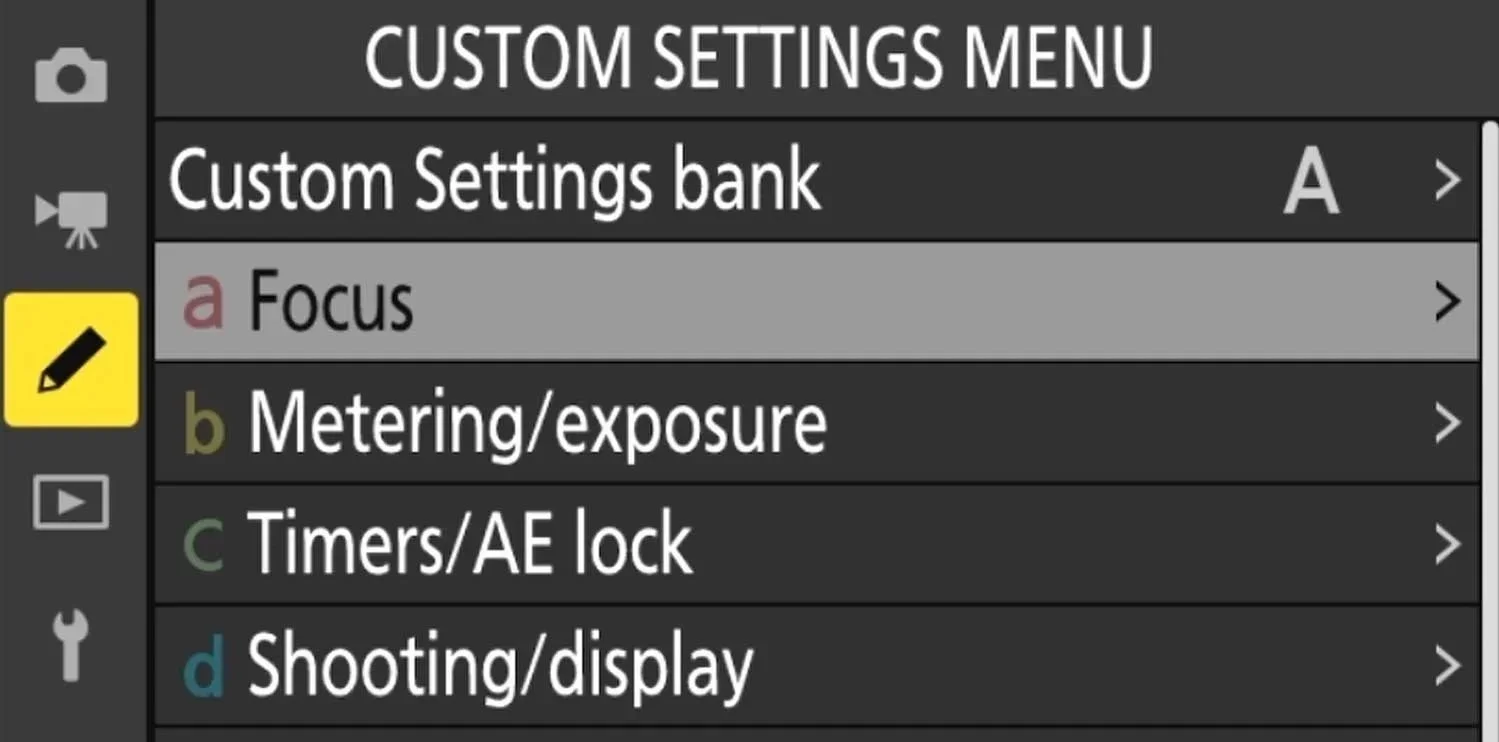Charles Bush Photography - August 2025 Newsletter
Lake Martin Cypress Scene
Late Summer Notes from Louisiana
August in Louisiana is always a mix of heat, humidity, and anticipation. The cypress swamps are heavy with green, and soon the first hints of autumn will arrive. For me, it’s also the time to put the finishing touches on the Fall Photo Tours and look ahead to what’s coming in spring.
Fall 2025 Cypress Swamp Tours
Sunrise at Lake Dauterive
This fall’s cypress swamp tours are shaping up beautifully. I’ve completely rebuilt the tour page with a clearer overview, collapsible sections for locations, and more direct booking links. Whether you’ve been with me before or are considering your first tour, the page is now much easier to explore and plan your trip.
We’ll spend time at Lake Dauterive, Lake Fausse Pointe, and Lake Martin, each offering unique compositions with fall color, misty mornings, and dramatic cypress reflections. If photographing backlit Spanish moss at sunrise is on your bucket list, this is the season to join.
👉 View Fall 2025 Tour Details & Book Now
Spring 2026 Bird Photography Tours
Roseate Spoonbill Family
The Spring 2026 bird tours are now published, complete with images highlighting the opportunities in April, May, and June. From nesting Roseate Spoonbills to Black-crowned Night Herons and Ospreys, Louisiana continues to deliver some of the best bird photography in the country.
I’ve also added more variety to the galleries, showcasing behaviors such as feeding, flight, and nesting — not just portraits. These tours are small, boat-based, and give you access to locations that casual visitors simply can’t reach.
👉 View Spring 2026 Tour Details & Book Now
Blog Highlights
Nikon Z8 Firmware Updates – If you’re a Nikon Z8 shooter, you’ll find my recent posts useful. I’ve written about the new focus limiter in firmware v3.00, as well as the v3.01 bug fix release. I’m also building downloadable comparison tables that line up menu changes across firmware versions.
Photographing in Fog and Backlit Mist – This post kicked off a new series on photographing in unique light conditions. I’ll soon be sharing a step-by-step on how I processed one of my favorite fog images into a black-and-white print.
One-on-One Consulting
Fiule Grab from One on ONe Online Consulting Session Setting Nikon Z8 Menu Settings.
Alongside tours and blog posts, I’ve launched a new Consulting Services Page. I’m offering Nikon camera setup consulting where I can walk you through the menus of your Z8 or other Nikon body. With screen sharing over Zoom, I can even cast the actual camera menu so you can follow along in real time.
I also cover workflow topics like Lightroom catalog setup, Photo Mechanic ingesting and IPTC metadata, and strategies for protecting your photo files with solid backup systems. Whether you’re just starting out or refining a professional workflow, these sessions are tailored to your needs.
Looking Ahead
As fall approaches, I’m excited to get back out on the water with groups of photographers. There’s nothing quite like watching mist rise over a Louisiana swamp at sunrise — and capturing it with a camera in hand.
If you’d like to join a tour, check out the updated pages for Fall 2025 Tours and Spring 2026 Tours. Or, if you want help setting up your Nikon or organizing your photo library, book a session through the new Consulting Page.
Photographing the Roseate Spoonbill in Louisiana
This is an update to a post made in 2013, considering changes to the locations where these beautiful birds can be photographed. Shots at the primary locations taken this year, 2024, are included. I suggest also reading the article written in 2013, which can be found here.
General Facts and Appearance
Photographing the Roseate Spoonbill is one of my favorite activities in the spring. The Roseate Spoonbill is one of the most striking wading birds in North America. Its body is primarily pink, with red feathers on its wings and an orangish patch on its tail. The bird’s distinctive spatula-shaped bill is used for scooping food from the water. Measuring about 30 inches tall with a wingspan of approximately 36 inches, the Spoonbill becomes even more vibrant during spring mating season, when its reddish wing feathers are most prominent.
📸 Want to photograph Roseate Spoonbills in peak breeding colors?
Join my Spring 2026 Bird Photography Tours in Louisiana — timed for the best Spoonbill activity and lighting conditions.
In Louisiana, Roseate Spoonbills typically mate in early spring (March or April), with chicks hatching in May or June. They nest alongside other wading birds in cypress trees growing in the water. Each mating pair produces 3 to 5 chicks, which are a much paler pink compared to adults.
During the early 1900s, the Spoonbill population was severely reduced by "plume hunters," who used their feathers for items like fans. Since they nest among other wading birds such as egrets, also targeted for their feathers, the disturbance of shared nesting areas further impacted their numbers. Today, nesting populations are concentrated along the coasts of Texas, Louisiana, and Florida. In Louisiana, the largest nesting sites are in the southwestern part of the state, within about 100 miles of the Gulf Coast.
Behavior
Roseate Spoonbills are often seen wading in the water, foraging for food with their spoon-shaped bills. Unlike herons, they walk in a crouched position, moving their tails back and forth as they go. In flight, they extend their heads straight out and flap their wings relatively slowly.
During nesting season, males are highly territorial, aggressively defending their nesting sites through displays and chasing rival males. Spoonbills are social birds and are often observed in flocks both during and outside the breeding season. When nesting, large groups engage in dramatic "upflights," where many birds leave and return to the nesting site together.
Migratory Behavior
In Louisiana, Roseate Spoonbills are non-migratory. While they disperse from nesting sites, likely due to food availability, they remain in the general area year-round.
For additional information, the best online reference can be found at Cornell University's Birds of North AmericaOnline.
Best Locations for Photographing the Roseate Spoonbill in Louisiana
Lake Martin
Lake Martin's Rookery hasn't returned to its pre-2006 status. While it still exists, it's not within photographic range, and only an occasional Roseate Spoonbill can be seen, usually high overhead.
Rip Van Winkle Gardens - Jefferson Island
Roseate Spoonbill Bathing at Rip's Rookery in May, 2024
The Rookery entrance is now along the main road into the Gardens, named Rip's Rookery. Previously, the best photography was at a small pond on the West side of the complex, but erosion has mostly submerged the Cypress Trees island. While a few birds, including Roseate Spoonbills, still nest there, their numbers have decreased. The best photography spot is now at the larger pond, requiring a longer lens for close shots. Flight shots can be captured with a shorter telephoto lens, but shots in the trees need at least a 600mm lens, preferably with a teleconverter. The afternoon is the best time to photograph, as the East Side of the pond is far from the nesting birds. This year was worth visiting, but it's not what it once was. Their web site can be seen here.
Talons Landing Road
Recent visits haven't yielded any birds.
Miller's Lake
Roseate Spoonbill in Flight at Miller's Lake, taken in April, 2024
In recent years, Miller's Lake has offered better opportunities to photograph Roseate Spoonbills. We've used a boat with an outboard motor to reach birds in the trees, though the shallow lake makes boating challenging.
Cazan Lake at PJF Farms
Roseate Spoonbill taken at Cazan Lake in May of 2024
Years ago, photographing Roseate Spoonbills at Cazan Lake required navigating a muddy road and hiking about a mile for limited access. Now, the access road is gravel, and the birds nest in a more accessible area, allowing for roadside photography. The best time to photograph is early morning. Note that boats are not allowed in the nesting bird area to protect them during nesting season. Access to Cazan Lake is bypassed either a single-day or annual pass. The Web site for the Rookery is here.
Miller's Lake and Cazan Lake are close, making it ideal to photograph Cazan Lake in the morning and Miller's Lake in the afternoon.
Please consider joining one of my Spring 2026 Bird Photography Tours to photograph Roseate Spoonbills and other iconic Louisiana wildlife. I’ve been guiding these spring tours since 2003 and know exactly when and where to go for the best photo opportunities.
If you found value in this post, please consider making a donation to help me continue publishing guides and field notes like this.








